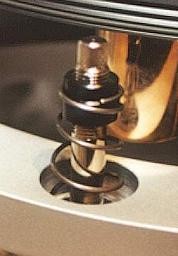I'm still setting up and optimizing my new system, waiting for speakers to break in, messing with the turntable, rearranging furniture, etc.
But the differences in setting up my sources couldn't be more stark.
Digital:
1. Plug ethernet cable (currently Belden Cat 5 (or is it 6?), but it doesn't really matter as it's <2 meter) from Linsys Velops hotspot into Devialet
2. Add Devailet as output in Roon
3. Done.
Turntable (granted, the Gyro SE, as a suspended table is more tweaky than average):
1. Replace inverted thrust bearing with new 7/32 inch SI3N4 grade 3 ball bearing.
2. Oil bearing and fill sump reservoir
3. Replace suspension original tower decoupler with new bearing-based suspension and Delrin spacers
4. Replace suspension original metal washers with PTFE
5. Level turntable using feet ferrules
6. Weigh tonearm + cartridge + armboard. Any underage from combined 1kg weight will be added later to balance via under chassis weights.
7. Mount tonearm on arm board.
8. Mount tonearm + arm board to chassis using Delrin spacers, attaching arm board grounding cable to mounting screw such that it touches an unpainted part of the chassis. Add balancing weights.
9. Re-level turntable. Adjust suspension springs to ensure proper clearance between chassis and plinth, ensure proper 'bounce'. Re-level turntable again after adjusting springs.
10. Adjust tonearm height / VTA
11. Adjust cartridge VTF
12. Adjust cartridge azimuth
13. Check cartridge alignment vs OEM, Stevenson, Lofgren, Baerwald, or DIN alignment.
14. Adjust cartridge overhang and angle to meet alignment
15. Test platter speed
16. Adjust motor to fix speeds
17. Adjust cartridge capacitance loading
So far, I'm only up to #11....
And, being analog, all of that stuff actually matters and is measurable. There is no snake oil here. That's just how fiddly vinyl is.
Shocking, really.



